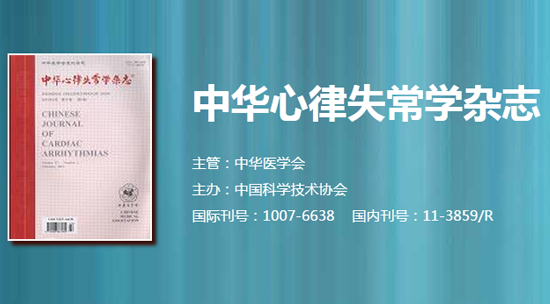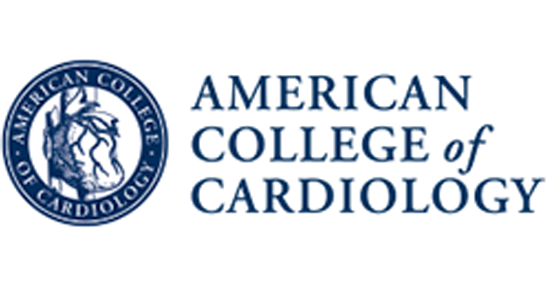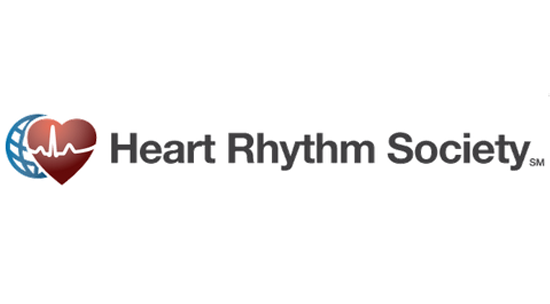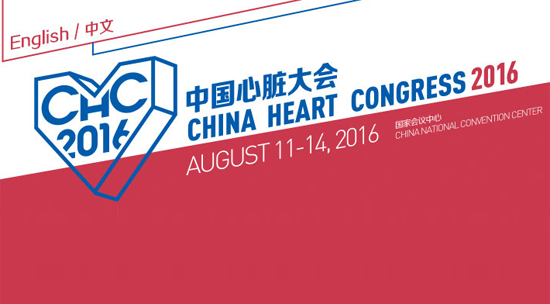HeartRhythm主编—陈鹏生教授语音速递(八月刊 英文版)
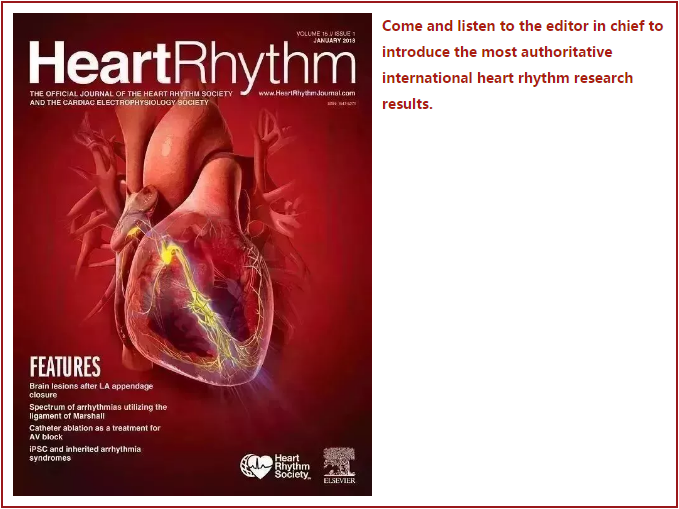
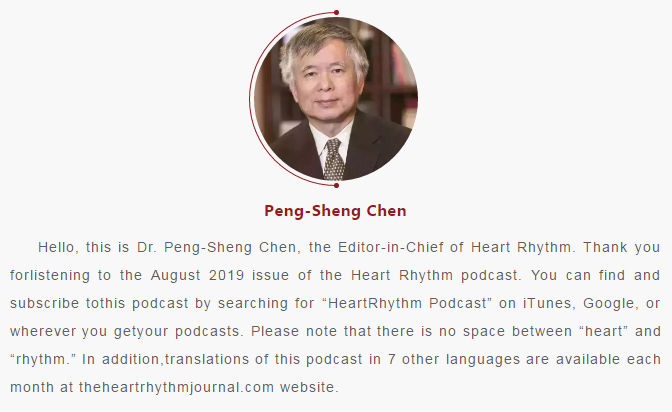
1
The featured article this month is an original article titled “Grapefruit Juice prolongs the QTInterval of Healthy Volunteers and Patients with Long QT syndrome” by Chorin et al fromTel Aviv University, Israel. An accompanying video author interview conducted by our onlineeditor, Dr. Daniel Morin, can be found at the www.heartrhythmjournal.com website. The authorsperformed an open-label, randomized, crossover study. They found that the ingestion of one totwo liters of pink grapefruit juice led to significant QTc prolongation, that the prolongations wasgreater in females than in males, and particularly marked in patients with long-QT syndrome. Ihave been following a 20-year old woman with pathogenic KCNH2 mutation in my outpatientclinic. Consistent with Chorin’s report, my patient had significant QTc prolongation afterconsuming a large quantity of grapefruit juice. In light of these findings, patients with long QTsyndrome should be advised to avoid grapefruit juice.
2
The next paper is titled “Feasibility of percutaneous epicardial mapping and ablation forefractory atrial fibrillation” by Jiang et al from UCLA. The authors performed combined epi-endo mapping of AF in 18 patients via an inferior subxiphoid percutaneous approach. Amongthem, 4 demonstrated non-transmural atrial low voltage regions with relative epicardial sparingin the posterior left atrial wall. Transmural isolation of the posterior wall was achieved by usingepicardial voltage data for guidance. The authors conclude that a percutaneous epicardialapproach for mapping and ablation of the left atrium is feasible in the EP lab during endocardialcatheter ablation for AF, and may be useful as an adjunctive approach in refractory cases. Thispaper is interesting because it shows the contribution of epicardial mapping/ablation inpersistent AF.
3
Johner et al from Geneva University Hospitals, Switzerland wrote the following article titled“Inducibility at Redo Ablation: Electrophysiological Evidence of Extra-Pulmonary VeinSubstrate Progression”. The authors attempted burst pacing to induce AF. Inducibilityprogression was defined as AF induction at further steps of redo ablation compared to de novoablation. The results show that patients with recurrent AF after first ablation exhibit inducibilityprogression more frequently at redo compared to patients with recurrent organized atrialtachycardia. Inducibility progression correlates with more advanced recurrent AF type, larger LAolumes and progressive RA enlargement. These findings suggest that changes in post-PVI AFnducibility may accurately indicate progression of AF-maintaining substrate outside of the PVs.
4
Next up is “Effect of beta-blockers on triggering of symptomatic atrial fibrillation by angeror stress” by Lampert et al, Yale University. The authors performed a prospective, controlled,electronic-diary-based study of emotions preceding episodes of AF in 91 patients for a year.Overall, the likelihood of an AF episode was significantly higher during anger or stress. Thiseffect, however, was significantly attenuated in the patients on beta-blockers. These findingscan be explained by the increased sympathetic tone and decreased vagal activity duringpsychological stress. Anger and stress may be a modifiable risk for atrial fibrillation.
5
The following article, titled “Ischemic ventricular tachycardia from below the posteromedial papillary muscle, a particular entity” was written by Enriquez et al from Queen’s University,Kingston, Canada. The authors studied 10 patients with recurrent ischemic VT, evidence of inferior scar, and failed endocardial ablation. Epicardial mapping successfully mapped 11inducible VTs to the epicardium underlying the posteromedial papillary muscle. Among these VTs, 8 had a right bundle branch block morphology, while 3 exhibited a left bundle branch blockmorphology. An inferior QS pattern was present in 10. Noninducibility was achieved in mostpatients. The authors conclude that in patients with inferior ischemic scar, VT may arise fromthe area underneath the posteromedial papillary muscle, limiting endocardial-only ablation. Thistype of VT is a particular entity that needs to be studied with intracardiac echo for substrateidentification and epicardial mapping.
6
The next article is titled “Increased risk of late pacemaker implantation after ablation for atrioventricular nodal reentry tachycardia” by Kesek et al from Umea University, Sweden. All patients undergoing first-time ablation for AVNRT in Sweden from 2004-2014 were identified from the Swedish ablation registry. The cohort was compared to patients ablated for an accessory pathway and to matched controls. About 1.4% of AVNRT patients, 0.7% of accessory pathway patients, and 0.4% of controls required pacemaker implantation within 30 days after the procedure. The authors conclude that the risk of late pacemaker implantation after AVNRT ablation was low but three times higher compared to the control population. However, this report did not include details about the ablations. Therefore, the mechanisms of these observations remain unclear.
7
Next up is “Iatrogenic aortic regurgitation after radiofrequency ablation of idiopathic ventricular arrhythmias originating from the aortic valvular region” by Shinoda et al from University of Tsukuba. After ablation, mild aortic regurgitation occurred in 5 of 32 patients with PVCs arising from the aortic cusps, versus only one of 13 control group patients with papillary muscle ablation. The occurrence of aortic regurgitation was associated with a longer ablation time and higher average output. No patients required any additional medical management or surgical intervention. The authors conclude that iatrogenic mild aortic regurgitation after ablation in the aortic root occurred with a noticeable prevalence, which was associated with extensive ablation both above and below the aortic cusps as well as catheter-related mechanical factors. Patients after aortic cusp ablation need careful follow up, but it should be noted that none in this series required surgical intervention of the aortic regurgitation.
8
Munawar et al from University of Adelaide and Royal Adelaide Hospital, Australia wrote the following article titled “Implication of ventricular pacing burden and atrial pacing therapies on the progression of atrial fibrillation”. This is a meta-analysis of 21 randomized controlled trials with over 8,000 patients. They demonstrated that algorithms to reduce the frequency of ventricular pacing did not significantly suppress AF progression. The atrial pacing therapy algorithms could suppress PAC burden, but did not prevent AF progression. This meta-analysis is limited by the heterogeneity of the study population included in the studies. It remains possible that reducing ventricular pacing burden may prevent AF in certain specific patient populations.
9
The next paper is titled “Internal insulation breaches in an implantable cardioverter- defibrillator lead with redundant conductors” by Hauser et al from Minneapolis Heart Institute Foundation. The authors searched the FDA MAUDE database internal insulation breaches and other failure modes. The primary cause of Durata lead failure was insulation breach, which was responsible for 11 failures to treat VT/VF. The authors conclude that Durata ICD leads are susceptible to internal insulation breaches that may result in failure to treat VT/VF. These findings suggest that high voltage testing of Durata leads may be indicated during pulse generator replacement or when an insulation defect is suspected.
10
Next up is “Periodic Repolarization Dynamics as Risk Predictor after Myocardial Infarction” by Rizas et al from University Hospital Munich, Germany. Periodic repolarization dynamics is a novel ECG phenomenon that refers to sympathetic-activity associated low- frequency modulations of cardiac repolarization. The authors prospectively studied 455 survivors of a myocardial infarction with 27 months of follow up duration. Increased periodic repolarization dynamics was significantly and independently associated with both total and cardiovascular mortality. This study validated the results of prior retrospective studies, confirming the clinical importance of periodic repolarization dynamics in risk stratification.
11
Next is a paper titled “Exercise testing oversights underlie missed and delayed diagnosis of catecholaminergic polymorphic ventricular tachycardia in young sudden cardiac arrest survivors”. This paper was written by Giudicessi and Ackerman from the Mayo Clinic. The authors retrospectively reviewed 101 young sudden cardiac arrest survivors with otherwise structurally normal hearts. Among them, 15 were ultimately diagnosed with CPVT. One-third had a delay in diagnosis because an exercise stress test was either never performed, or a stress test was performed but the patients was misdiagnosed. Exercise testing and/or catecholamine provocation testing should be standard of care following sudden cardiac arrest in the young, especially if the sudden cardiac arrest occurred with exertion or emotion.
12
Gould et al from Guy’s and St Thomas’ NHS Foundation Trust, London, UK wrote the following article titled “Mean entropy predicts implantable cardioverter-defibrillator therapy using cardiac magnetic resonance texture analysis of scar heterogeneity”. The authors studied 114 consecutive patients who underwent CMR imaging prior to ICD implantation, and followed them for a median of 955 days. They found that scar heterogeneity, quantified by mean entropy using CMR-texture analysis, was an independent predictor of appropriate ICD therapy in the mixed cardiomyopathy cohort and ischemic cardiomyopathy-only group. The results suggest a potential role for CMR-texture analyses in predicting ventricular arrhythmias and risk-stratifying patients for ICD implantation. This paper also suggests that ventricular scar heterogeneity plays a role in arrhythmogenesis.
13
The next article is by Wan et al, from my own research laboratory at Indiana University. The paper is titled “Antiarrhythmic and proarrhythmic effects of subcutaneous nerve stimulation in ambulatory dogs”. We prospectively randomized 22 dogs into 5 different output groups ranging from 0 to 3.5 mA for subcutaneous nerve stimulation, with a neurostimulator and electrodes implanted under the thoracic skin. The results showed that in ambulatory dogs, low output subcutaneous nerve stimulation causes cardiac nerve sprouting and increases plasma norepinephrine concentration and the duration of paroxysmal atrial tachycardia episodes. In contrast, high output subcutaneous nerve stimulation is antiarrhythmic. Electrical stimulation of the skin can potentially be used for arrhythmic control, but can also be proarrhythmic as in other forms of therapy.
14
Next up is a paper titled “Minimally invasive percutaneous epicardial placement of a prototype miniature pacemaker with leadlet under direct visualization: a feasibility study in an infant porcine model”. In infants, pacemaker implantation is limited to epicardial lead placement and use of an abdominal generator pocket. The authors propose a minimally invasive solution using a prototype miniature pacemaker with a steroid-eluting leadlet that can be affixed to the epicardium under thoracoscopy. This was successfully tested in 12 piglets, showing this approach was safe and avoided open-chest surgery and creation of an abdominal generator pocket. This new technology may one day reduce morbidity associated with pacemaker implantation in infants.
15
These original articles are followed by three reviews. The first was written by Haissaguerre et al from the University of Bordeaux, on “Idiopathic ventricular fibrillation with repetitive activity inducible within the distal Purkinje system” The second review was by Capecchi et al from University of Siena, Italy, titled “Autoimmune and inflammatory K+-channelopathies in cardiac arrhythmias: clinical evidence and molecular mechanisms” A third review is titled “Alternative left ventricular pacing approaches for an optimal cardiac resynchronization therapy” written by Galand et al from University of Rennes, France. There is an Unknown of the Month written by Ho and Logue from Thomas Jefferson University Hospital, titled “Termination of an Unusual Long RP Tachycardia- What is the Mechanism?” Scherlag and Po from University of Oklahoma wrote a Viewpoint article titled “The 50 Year Anniversary of the His Bundle Recording and Pacing in Clinical Medicine”. This month’s HRS 40th Anniversary Viewpoint was written by Dr Andrew Wit of Columbia University, and is entitled “Present at the creation—My viewpoint on the origins of cellular and clinical electrophysiology of arrhythmias”.
I hope you enjoyed this podcast. For Heart Rhythm, I’m Editor-In-Chief, Dr. Peng-Sheng Chen.
